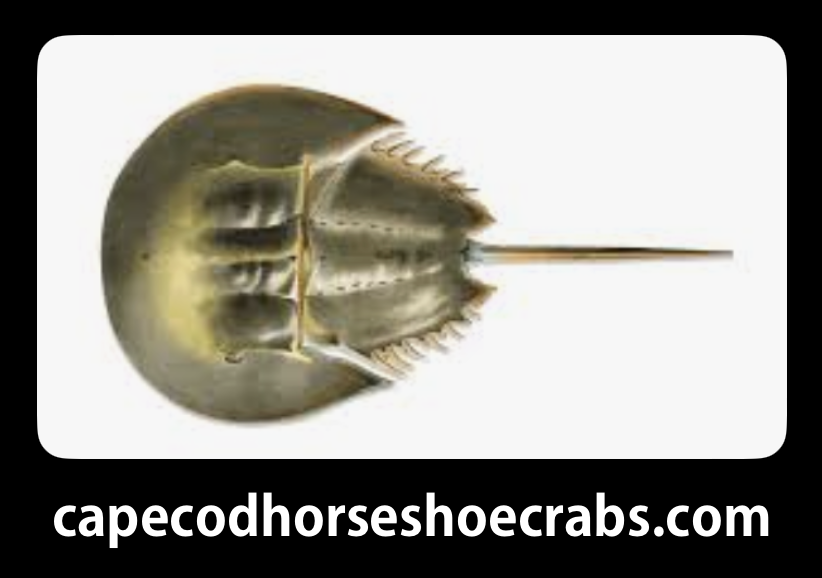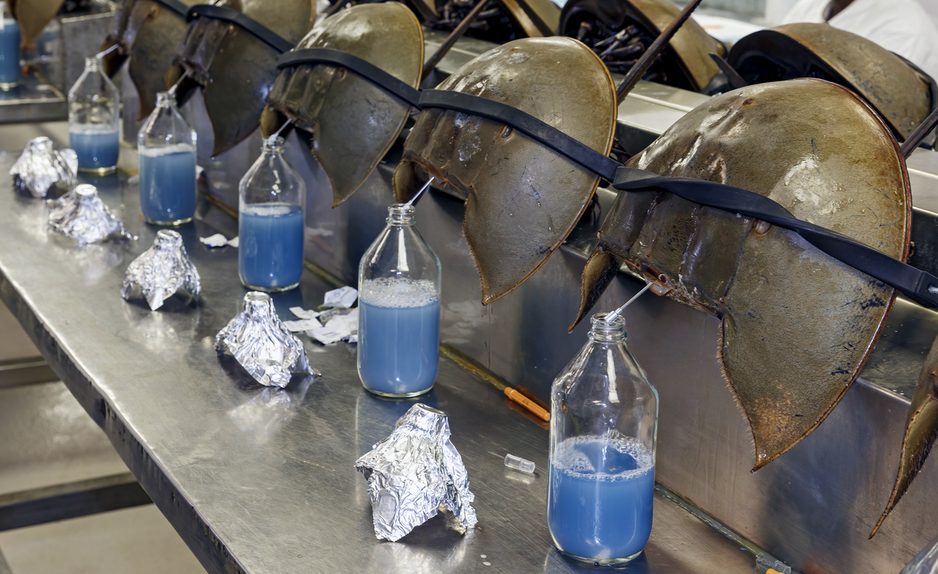This famous local species has populated Cape Cod’s waters and beaches forever. Recent years there has been a significant decline in horseshoe crab populations.
There is a ton of information available on the web about the Atlantic Horseshoe Crab. Below is brief description of these ancient animals as well as some of the factors impacting their decline.
Did you know that horseshoe crabs are 300 – 400 million years old? That makes them prehistoric and survivors of at least two mass extinctions.
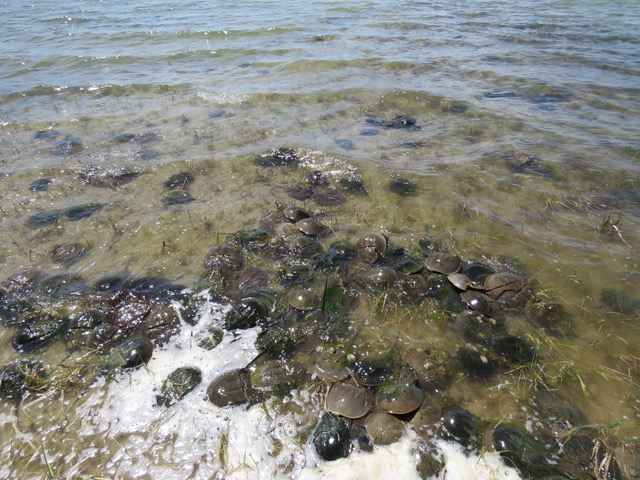
Horseshoe Crabs
Atlantic Horseshoe Crabs (Limulus polyphemus) are an integral species to our coastal ecology. They have have shared our waters for millions of years.
Horseshoe crabs are not true crabs but are arachnids which include spiders and scorpions. They occur in shallow coastal waters on soft, sandy or muddy bottoms where they quite literally plow the bottom in search of worms and other marine invertebrates. This overturning of sediments is akin to roto-tilling a garden and has significant benefits for shellfish populations and overall coastal health.
They reach sexual maturity at about 8-10 years of age and may live 20 years. They visit the inter-tidal zone during spring high tides to breed and lay eggs. Migratory bird species, especially some species of sandpipers, time their annual northern migrations to coincide with the millions of fat and protein rich eggs the horseshoe crabs provide.
Today, populations of this critical species are threatened by biomedical and bait harvesting, as well as by habitat loss and sea level rise.
Factors Impacting the Decline of Horseshoe Crabs on Our Shores
- Biomedical Collection
- Bait Harvest
- Habitat Loss
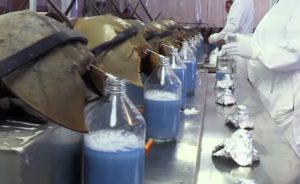
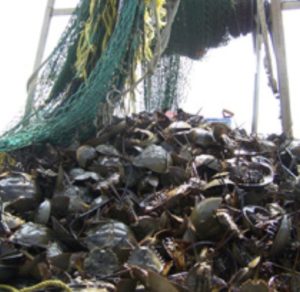
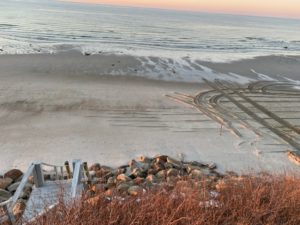
Biomedical Collection
Most of us have heard about the horseshoe crab’s valuable “blue blood”. This horseshoe crab blood can be manufactured into limulus amebocyte lysate (LAL) that is used to detect pathogens in indispensable medicines such as injectable antibiotics.
Horseshoe crabs that are collected for their blood are believed to be returned to their original habitat where they are able to regenerate new blood. Although there are “best practices” recommended, enforcement is both sporadic and difficult. Estimates for their mortality rate range from 15% -40% as a result of this practice.
The two largest companies on Cape Cod collecting horseshoe crab blood are:
Charles River Labs came to Cape Cod several years ago after facing lawsuits regarding its horseshoe crab collection practice in South Carolina. It is the understanding of CCHSC that Charles River Labs is licensed not only to take horseshoe crabs for biomedical use, but for bait harvest as well.
The MA DMF “Rent-A-Crab Program” allows biomedical labs to lease live horseshoe crabs from bait dealers for bleeding then they return the crabs to be sold as bait.
Bait Harvest
Horseshoe crabs are harvested for whelk bait. Whelks are conch-like shellfish that are fished locally and sold internationally. Whelks themselves are on the verge of becoming an endangered species.
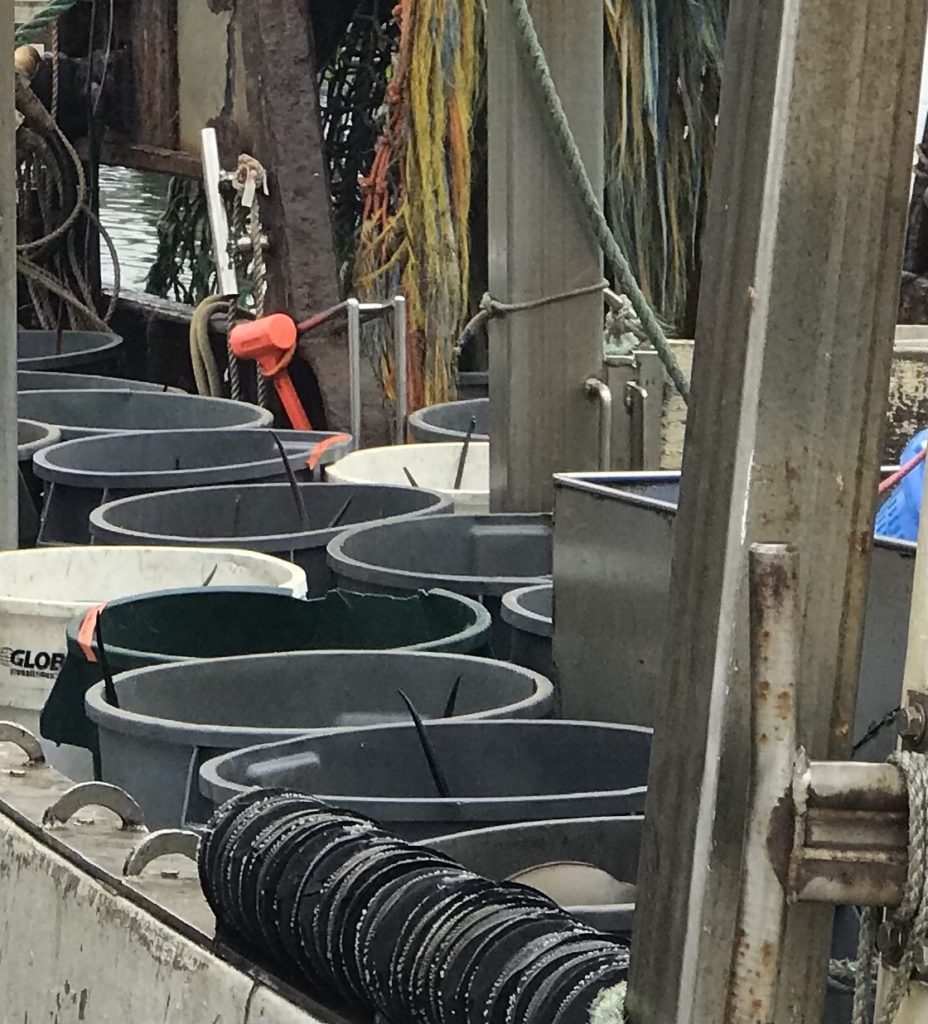
Spring spawning season is when the horseshoe crabs are most vulnerable to predation by bait harvester. During spawning season, female horseshoe crabs head to the shallows and beaches to drop their eggs. Male horseshoe crabs either follow closely or are attach themselves to the females in an effort to fertilize the eggs.
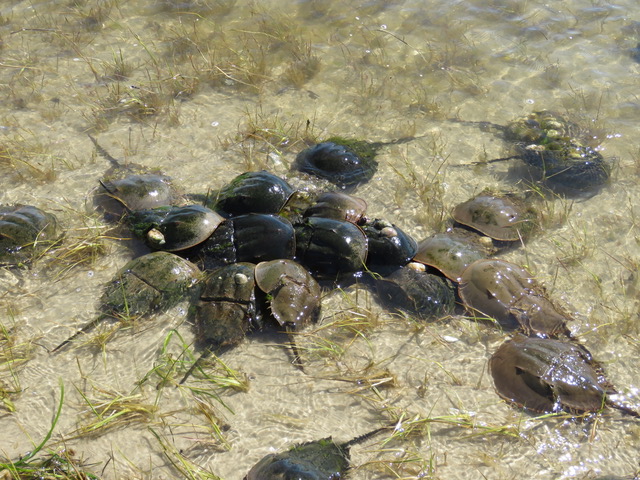
It is during spawning season (April – June) that bait fishermen target the larger female horseshoe crabs, as well as the males, for their bait harvest.
Unfortunately, there are more than several stories of horseshoe crab takes that have not made it to the bait market. Skiffs full of horseshoe crabs baked in the June sunshine killing the entire take. Or…last summer’s story on Harding’s Beach:
Habitat Loss
Where to begin…
- Development & Loss of Shoreline
- Beach Armoring for Erosion Control
- Sea Level Rise
- Degraded Water Quality
Horseshoe crabs are fighting an uphill battle in the face of our development. Steps to protect this species may be incremental, nevertheless each one contributes to preservation of both horseshoe crabs and their habitat.
SNAPSHOT OF CURRENT MASSACHUSETTS HORSESHOE CRAB REGULATIONS:
- Statewide Harvest: Biomedical Quota 200,000 – Bait Crab Quota 140,000
- Monomoy National Wildlife Refuge: No Harvesting Allowed
- Pleasant Bay: Biomedical Harvest Allowed, No Bait Harvest
- Draggers/Trawlers “Open Access LImit”: Allows 75 horseshoe crabs a day from overcatch/bycatch without a permit
For details, click this link to MA Division of Marine Fisheries
